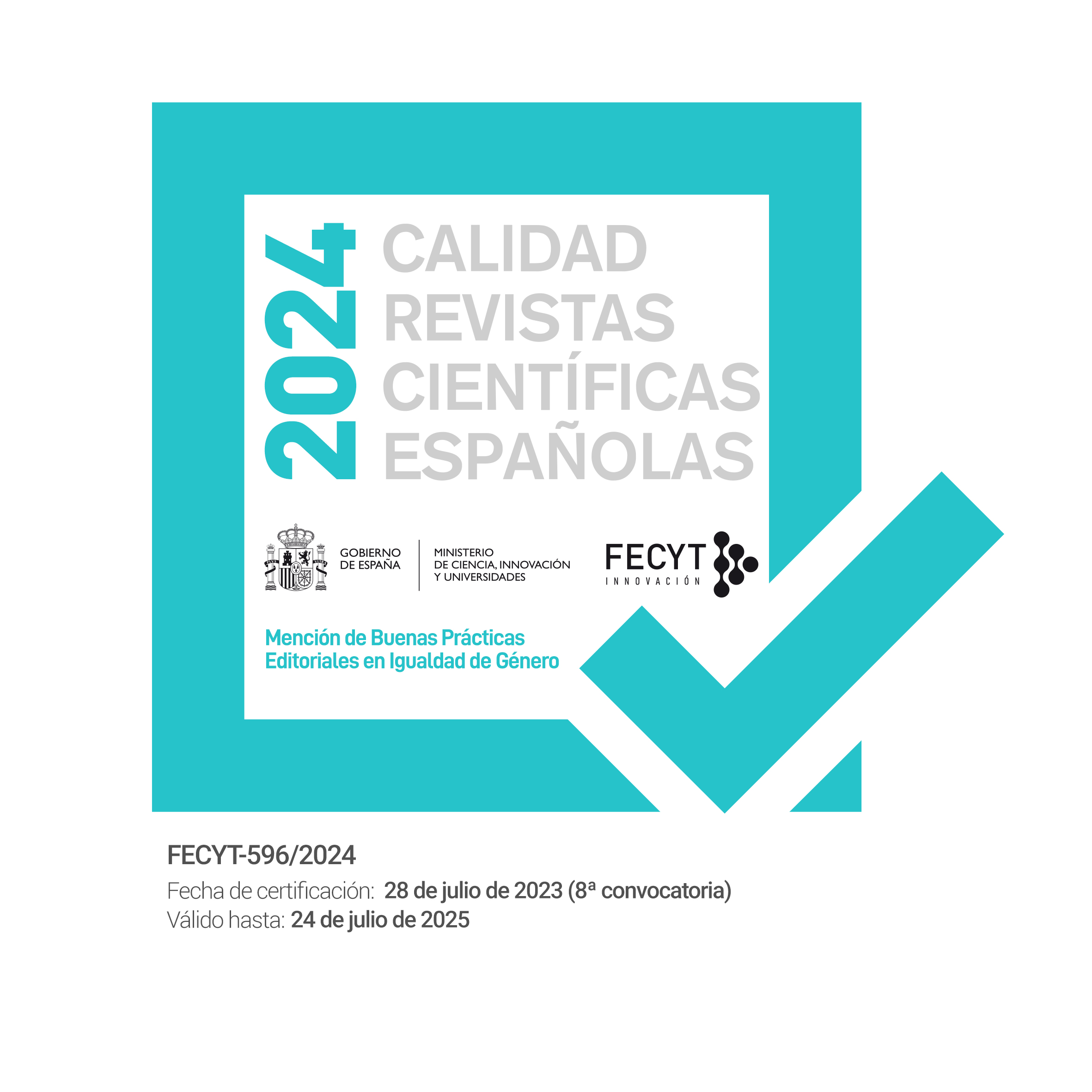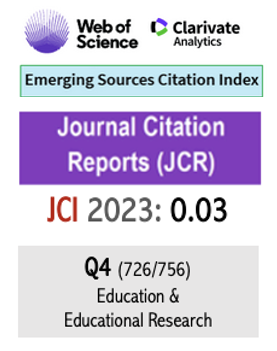The ecological footprint in the Universities
doi.org/10.20420/ElGuiniguada.2021.410
Keywords:
Huella ecológica, indicador, desarrollo sostenible, sostenibilidad, universidades…Abstract
Currently, one of the most commonly used indicators to catalog sustainable development is the ecological footprint, due to the advantages offered: integrates other environmental indicators, the results are simple and intuitive to interpret, can be applied at different levels (global, national, regional, institutional, business or personal). Although there are some limitations to specify the total environmental impact generated, such as not refer to the loss of biodiversity or not have the data necessary for calculation.
In this paper, it is delivered an analysis of the use of the ecological footprint as an indicator of sustainability from the university perspective. It is described as in the area of universities, the determination of the ecological footprint persecutes to incorporate sustainability into their organization, to which could provide a number of advantages: analysis of the resources consumed, as an educational tool, environment awareness, participation of the entire university community, synergies in various areas of knowledge, stimulation of policies and measures in favor of real sustainable development that can influence the immediate environment or inspire other institutions (hospitals, schools, public administrations, etc.) and society in general. Likewise, it is contrasted that actually, it does not exist an agreed methodology for calculating the ecological footprint at the universities, which also considers the logical inequalities that involves comparing different university contexts (climate, living standards, geographical layout, type of transport...) making it difficult comparisons of the results obtained.
Downloads
References
Aall, C., & Thorsen Norland, I. (2005). The use of the ecological footprint in local politics and administration: Results and implications from Norway. Local Environment, 10(2), 159-172. Available online:
Arroyo, P., Álvarez, J. M., Falagán, J., Martínez, C., Ansola, G., & de Luis Calabuig, E. (2009). Huella ecológica del campus de Vegazana (Universidad de León): una aproximación a su valor. Implicaciones en la sostenibilidad de la comunidad universitaria. Seguridad y medio ambiente, (113), 38-51. Available online: https://www.fundacionmapfre.org/documentacion/publico/i18n/catalogo_imagenes/grupo.cmd?path=1047770
Calvo, M., & Sancho, F. (2001). Estimación de la huella ecológica en Andalucía y aplicación a la aglomeración urbana de Sevilla. Dirección General de Ordenación del Territorio y Urbanismo. Consejería de Obras Públicas y Transportes. Junta de Andalucía. Sevilla.
Campos, M., Calero, R., & González, M. (2013). La Huella Ecológica del agua industrial en territorios insulares: sostenibilidad versus resiliencia. (Tesis doctoral, Universidad de Las Palmas de Gran Canaria, España). Available online: http://hdl.handle.net/10553/11536
Catalá, J. (2015). Diseño y validación de un procedimiento de cálculo de la huella de carbono en una administración local. Tesis doctoral. Available online: http://dspace.umh.es/bitstream/11000/1755/1/Tesis%20J%20Catala%20Goyanes.pdf
Cruz-Rodriguez, Javier; Luque-Sendra, Amalia; de las Heras, Ana; et ál. (2020). Analysis of Interurban Mobility in University Students: Motivation and Ecological Impact. International Journal of Environmental Research and public Health , 17 (24).
Collins, A., & Fairchild, R. (2007). Sustainable food consumption at a sub-national level: An ecological footprint, nutritional and economic analysis. Journal of Environmental Policy & Planning, 9 (1), 5-30.
Conway, T. M., Dalton, C., Loo, J., & Benakoun, L. (2008). Developing ecological footprint scenarios on university campuses: a case study of the University of Toronto at Mississauga. International Journal of Sustainability in Higher Education, 9 (1), 4-20.
Dawe, G. F., Vetter, A., & Martin, S. (2001). An overview of ecological footprint and other tools and theur application to the development off dudtainability process. Audit and methodoloy at Holme Lancy College, UK. Internatioanl Journal of Susteinability, 340-371.
Domènech, J. (2009). Huella ecológica y desarrollo sostenible (2ª ed. ed.). AENOR.
Elafi, O. (2019). The mediating effect of green innovation on the relationship between green supply chain management and environmental performance. Journal of Cleaner Production, 229, 115-127.
Erias, A., & Álvarez-Campana, J. (2007). Evaluación ambiental y desarrollo sostenible. Pirámide.
Estrada-Vidal, Ligia Isabel; Olmos-Gomez, Maria del Carmen; Lopez-Cordero, Rafael; et ál. (2020). The Differences across Future Teachers Regarding Attitudes on Social Responsibility for Sustainable Development. International Journal of environmental Research and public Health, 17 (15).
Fiala, N. (2008). Measuring sustainability: Why the ecological footprint is bad economics and bad environmental science. Ecological Economics, 67 (4), 519-525. Available online: http://www.sciencedirect.com/science/article/pii/S0921800908003376
Flint, K. (2001). Institutional ecological footprint analysis-A case study of the University of Newcastle, Australia. International Journal of Sustainability in Higher Education, 2(1), 48-62.
Gondran, N. (2012). The ecological footprint as a follow-up tool for an administration: Application for the Vanoise National Park. Ecological Indicators, 16, 157-166. Available online:
Gottlieb, D., Kissinger, M., Vigoda-Gadot, E., & Haim, A. (2012). Analyzing the ecological footprint at the institutional scale–The case of an israeli high-school. Ecological Indicators, 18, 91-97. Available online:
Janis, J. (2007). Quantifying the ecological footprint of the Ohio State University. Available online:
https://kb.osu.edu/dspace/bitstream/handle/1811/28365/Janis?sequence=1
Jorge, J., & Busquets, P. (2001). La petjada ecologica de l’EUPM. Universitat Politecnica de Catalunya. Available online: http://www.upc.es/mediambient/
Kitzes, J., Peller, A., Goldfinger, S., & Wackernagel, M. (2007). Current methods for calculating national ecological footprint accounts. Science for Environment & Sustainable Society, 4 (1), 1-9. Available online:
http://www.umweltbildung.at/cms/download/976.pdf
Lambrechts, W., & Van Liedekerke, L. (2014). Using ecological footprint analysis in higher education: Campus operations, policy development and educational purposes. Ecological Indicators, 45, 402-406. Available online:
http://www.sciencedirect.com/science/article/pii/S1470160X14001940
Leal, W. (2000). Dealing with misconceptions on the concept of sustainability. International Journal of Sustainability in Higher Education, 1 (1), 9-19. Available online: http://www.esd.leeds.ac.uk/fileadmin/documents/esd/2._International_Journal_of_Sustainability_in_Higher_Education_2000_Leal_Filho.pdf
Leiva, J., Rodríguez, I., & Martínez, P. (2012). Cálculo de la huella ecológica en universidades cubanas. Caso de estudio: Universidad central “Marta abreu” de las villas. Afinidad, 69 (557). Available online:
http://www.raco.cat/index.php/afinidad/article/viewFile/268345/355916
Lewan, L., & Simmons, C. (2001). The use of ecological footprint and biocapacity analyses as sustainability indicators for sub-national geographical areas: a recommended way forward. European Common Indicators Project. Available online: http://www.manifestinfo.net/susdev/01EUfootprint.pdf
Lenzen, M. (2002). Measuring our ecological footprint. Available online: http://www.usyd.edu.au/news/84.html?newsstoryid=1920
Li, G. J., Wang, Q., Gu, X. W., Liu, J. X., Ding, Y., & Liang, G. Y. (2008). Application of the componential method for ecological footprint calculation of a Chinese university campus. Ecological Indicators, 8 (1), 75-78.
López, N., & Blanco, D. (2008). Metodología para el Cálculo de la huella ecológica en universidades. In Congresso Nacional del Medio ambiente, Cumbre del Desarrollo Sostenible, Congresso Nacional del Medio ambiente, Cumbre del Desarrollo Sostenible, Madrid.
Lozano, R., Lukman, R., Lozano, F. J., Huisingh, D., & Lambrechts, W. (2013). Declarations for sustainability in higher education: Becoming better leaders, through addressing the university system. Journal of Cleaner Production, 48, 10-19. Available online: http://www.sciencedirect.com/science/article/pii/S0959652611003775
Martín, F. (2004). Desarrollo sostenible y huella ecológica: una aplicación a la economía gallega. Netbiblo.
Martínez, A. (2014). Estimación de la huella ecológica corporativa a un ayuntamiento. El problema y la propuesta de solución a la contrahuella. Desarrollo Local Sostenible, 19. Available online: http://78.46.60.201/rev/delos/19/huella-carbono-corporativa.pdf
Martínez, R., & Elorrieta, J. (2003). La huella ecológica en navarra. Economía, Medio Ambiente y Desarrollo Sostenible, 413-434.
McManus, P., & Haughton, G. (2006). Planning with ecological footprints: A sympathetic critique of theory and practice. Environment and Urbanization, 18 (1), 113-127. Available online: http://eau.sagepub.com/content/18/1/113
Merkel, J. (2003). Radical simplicity: Small footprints on a finite earth. New Society Publishers.
Nunes, L., Catarino, A., Teixeira, M., & Cuesta, E. (2013). Framework for the inter-comparison of ecological footprint of universities. Ecological Indicators, 32, 276-284. Available online:
http://www.sciencedirect.com/science/article/pii/S1470160X1300157X
Patarlageanu, Simona Roxana; Negrei, Costel; Dinu, Mihai; et ál (2020). Reducing the Carbon Footprint of the Bucharest University of Economic Studies through Green Facades in an Economically Efficient Manner. Sustainability, 12 (9), 3779. Available online:
Pon, D., Carlvo, M., Arto, I., Fernández, M., Martínez, S., & Planas, V. (2007). Análisis preliminar de la huella ecológica en España. Informe de síntesis. Seminario La Huella Ecológica en España.
Rees, W. (2003). Impeding sustainability. Plan High Educ., 31 (3), 88-98. Available online: http://ceae.colorado.edu/~amadei/CVEN4700/PDF/HigherEd(Rees).pdf
Rees, W. (2006). Ecological footprints and biocapacity: Essential elements in sustainability assessment. Renewables-Based Technology: Sustainability Assessment, 143-157. Available online:
http://onlinelibrary.wiley.com/doi/10.1002/0470022442.ch9/summary
Rickards, S., Howitt, R., & Suchet-Pearson, S. (2015). Ecological footprinting as a top-down and bottom-up approach to complete campus engagement and transformation towards the one planet goal. Integrative approaches to sustainable development at university level, 43-66.
Segalas, J., Ferrer-Balas, D., & Mulder, K. F. (2010). What do engineering students learn in sustainability courses? The effect of the pedagogical approach. Journal of Cleaner Production, 18 (3), 275-284.
Soto, M., & Pérez, M. (2008). A Pegada Ecolóxica da Universidade da Coruña.Oficina de Medio Ambiente, Univesity of A Coruna.
Sweeney, J. L., Socolow, R. H., Ruttan, V. W., Dietz, T., & Stern, P. C. (1997). Environmentally significant consumption: Research directions. National Academies Press.
Torregrosa, J. I. (2010). Un indicador ambiental para medir la sostenibilidad en las Universidades, la Huella Ecológica. Caso de estudio de la Universidad Politécnica de Valencia. Available online:
http://www.conama.org/conama10/download/files/conama/CT%202010/1335816566.pdf
Tornero, T., Sadhwani, J. & Mato, M. (2017). Sostenibilidad y educación ambiental en las universidades. El Guiniguada, 26, 89-103. Available online: https://ojsspdc.ulpgc.es/ojs/index.php/ElGuiniguada/article/view/506/723
Venetoulis, J. (2001). Assessing the ecological impact of a university: The ecological footprint for the University of Redlands. International Journal of Sustainability in Higher Education, 2 (2), 180-197. Available online:
http://www.emeraldinsight.com/doi/pdfplus/10.1108/14676370110388381
Wackernagel, M., Monfreda, C., Moran, D., Wermer, P., Goldfinger, S., Deumling, D., & Murray, M. (2005). National footprint and biocapacity accounts 2005: the underlying calculation method.
Wackernagel, M., & Rees, W. (1996). Our ecological footprint: Reducing human impact on the earth. New Society Publishers.
Wiedmann, T., & Barrett, J. (2010). A review of the ecological footprint indicator-perceptions and methods. Sustainability, 2 (6), 1645-1693.
Published
How to Cite
Issue
Section
License
Authors who publish with this journal agree to the following terms:
- Authors retain copyright and grant the journal right of first publication with the work simultaneously licensed under a Creative Commons Attribution License that allows others to share the work with an acknowledgement of the work's authorship and initial publication in this journal. You can not make a commercial use of the work. The use derived from the work is also not allowed.
- Authors are able to enter into separate, additional contractual arrangements for the non-exclusive distribution of the journal's published version of the work (e.g., post it to an institutional repository or publish it in a book), with an acknowledgement of its initial publication in this journal.
- Authors are permitted and encouraged to post their work online (e.g., in institutional repositories or on their website) prior to and during the submission process, as it can lead to productive exchanges, as well as earlier and greater citation of published work (See The Effect of Open Access).
















